Although the two plants have a somewhat similar appearance, there are some important differences that will make distinguishing them much more obvious. In addition to differences in their appearance, these two plants also require slightly different plant conditions.
In this article, we will discuss the differences between Pothos and Heartleaf Philodendron houseplants, so that you can ensure that your plant will thrive.
Pothos vs Philodendron at a glance
The best way to distinguish between Pothos and Philodendrons is through the overall shape and structure of the leaves. Pothos plants have thick, glossy, sometimes variegated leaves with a deeply grooved petiole. Heartleaf Philodendron leaves become more matte, elongated and heart-shaped, with a smooth petiole.
New growth on a Philodendron will probably also have a completely different color and be protected by its distinct cataphylls. Finally, Pothos plants have solitary, stubby aerial roots as opposed to the more stringy and clumsy aerial roots of a Philodendron.
Pothos vs Philodendron Overview
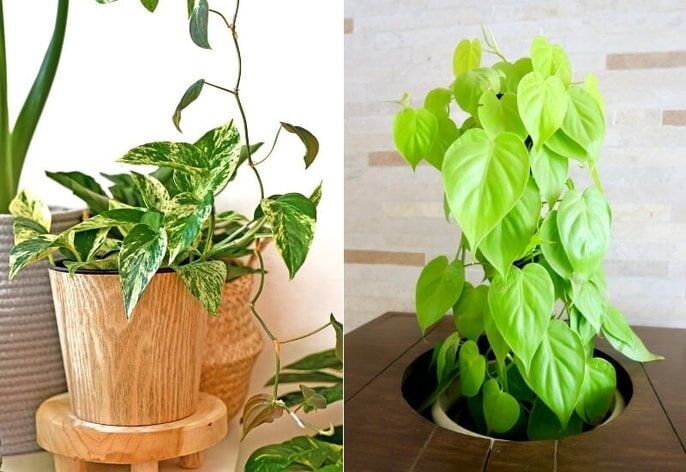
While Pothos and Philodendron plants belong to the same family, Araceae, they do not share a genus. That’s why it’s actually not as difficult to separate them as you might think.
Pothos are among the most popular of all houseplants. They can go by many names, including: Devil’s Ivy, Hunter’s Robe, Money Plant, Taro Vine and Silver Vine. These names all refer to the same plant, ie Epipremnum aureum.
Philodendron is the name of a comprehensive and versatile genus of plants, of which Philodendron hederaceum belongs to. Also known as the Heartleaf Philodendron, this is the most common Philodendron that can be confused with a Pothos due to similarities in their appearance.
Both of these plants are considered to be climbing potted plants with a low level of maintenance. They each have heart-shaped green or variegated leaves on vines and have similar care requirements.
To increase the confusion, retailers will sometimes mislab these plants in the store. This
Difference in care needs
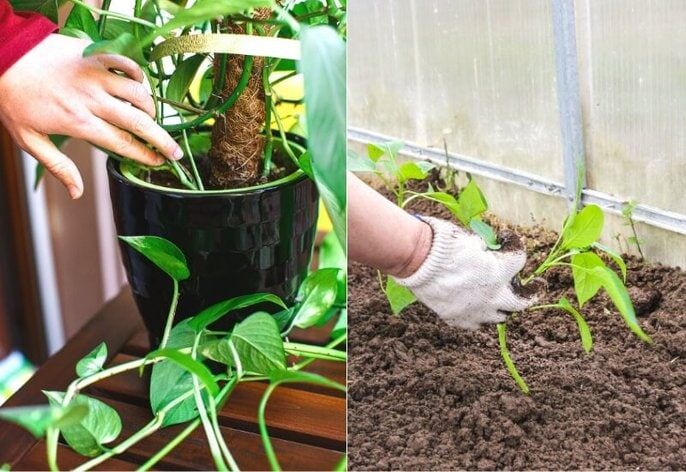
Although both plants are considered low maintenance potted plants, there are some slight differences in how they prefer to be treated under ideal conditions.
Pothos
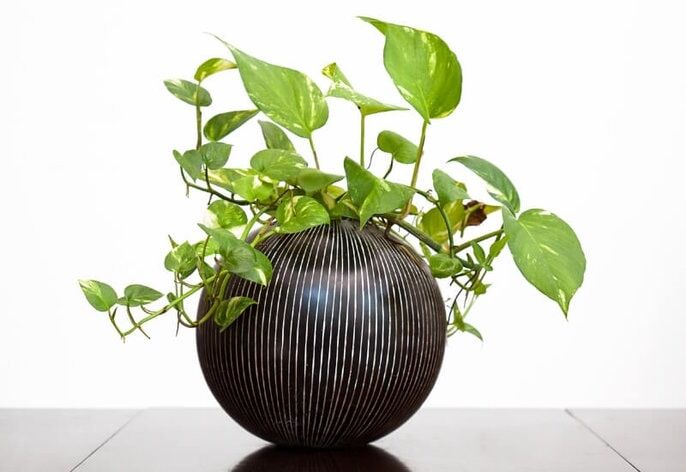
The common name Devil’s Ivy has been given to the Pothos plant because it is notoriously difficult to kill. These plants can adapt to survive in almost any condition; from dry soil in low light, to a bowl of water in bright sunlight.
Pothos plants can tolerate a small amount of direct sunlight without burning, unlike Philodendron. But they will suffer if placed in bright direct light all day. They are also more drought tolerant than Philodendron plants are.
Their ideal environment would be bright, indirect sunlight with regular watering. Because a Pothos prefers indirect light, they tend to lose their variation in shade when trying to retain more chlorophyll in the leaves. The more sunlight they get, the more variation will occur.
Philodendron
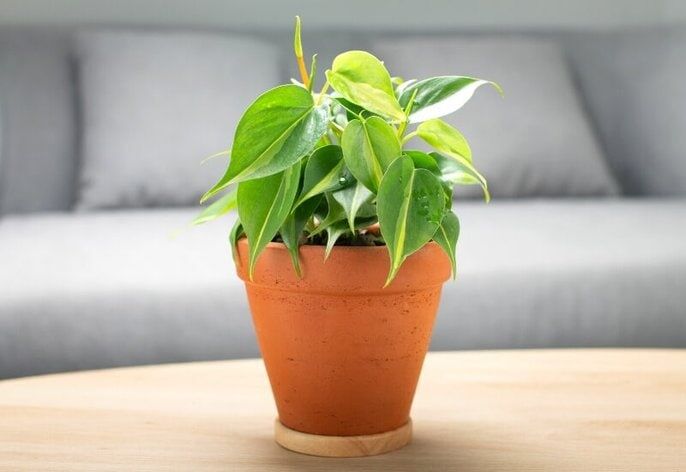
A Heartleaf Philodendron is better suited to thrive in much lower light conditions than Pothos. As a result, they do not have to reduce their variation as much as Pothos does in the shadows.
Philodendrons, however, will burn quite easily if placed in direct light. They prefer low light conditions, with regular watering. They are also more tolerant of colder temperatures than Pothos.
Pothos vs Philodendron How to tell the difference
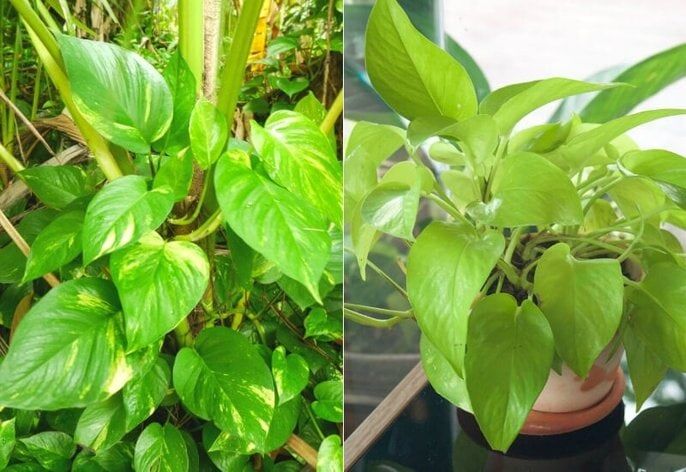
Although these two plants may look alike at first glance, there are some clear differences in the leaves that make it easy for an informed plant owner to distinguish them.
Overall shape of the leaves
The first place to look when trying to identify if a vine is a Pothos or a Philodendron is the shape of the leaves. The leaves of a heart-shaped philodendron usually have a more rounded and clear heart shape at the top, with a longer and leaner pipe-like tip.
Pothos leaves are usually less uniform in shape, with a shorter and less pointed tip. Pothos leaves also have a well-defined, deep ridge down the middle of the leaf due to their thick and ribbed leaf stalks. Philodendron lacks this ridge, with a flatter leaf stalk.
Texture By Bladen
The leaves of the Pothos leaves are shiny and seem to have almost a waxy finish. This glossy finish creates a subtle waxy glow when the leaves reflect sunlight.
Their leaves are also thicker, with the top slightly raised / clumsy and have a little more structure than the underside.
Philodendron’s leaves, on the other hand, are much softer than Pothos. They have a smooth matte surface, which does a better job of absorbing light.
Growth Habits And New Foliage
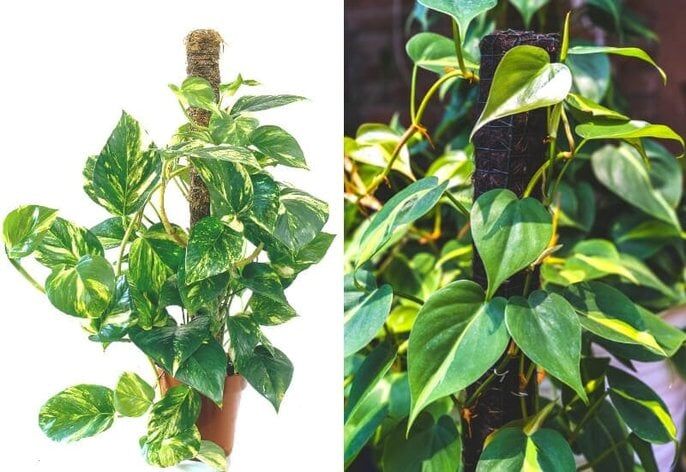
Another way to distinguish between the two plants is by observing their growing habits. This describes the different ways in which they each germinate new foliage.
A new Pothos leaf will detach from the current last leaf on the vine. However, a new philodendron leaf extends over a piece of the vine protected by a catafill.
The catafill is basically a small modified leaf, which acts as a thin, waxy protective layer over the sensitive new leaf when it is formed. This is a distinct philodendron trait, so if you are still unsure after examining the leaf shape, this is the one to look for next.
The catapult will continue to photosynthesize around the new leaf and help it to thrive, until the new leaf is ready to grow by itself. At this point, the catafill will turn brown and paper-like and eventually fall off by itself.
New growth on Philodendron plants can also help identify, as it tends to have a slightly different color from the rest of the plant. New leaves will often show a more pink or brownish hue, which becomes darker to its true color with maturity.
Pothos plants will not look so good with their new foliage. New leaves can curl up a slightly lighter green color than the rest of the leaves, changing rapidly to match maturity. However, they will not get a completely different color.
Air Roots And Strains
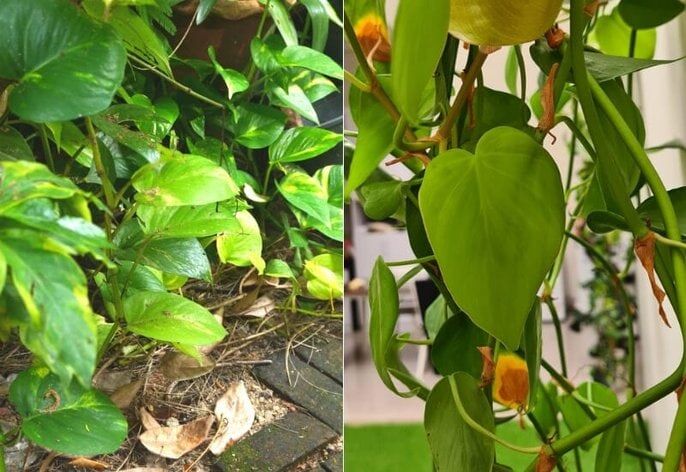
Both Pothos and Philodendron plants will form aerial roots, which can absorb moisture and nutrients, while supporting and anchoring the plants as they climb.
These aerial roots will grow from the plant’s nodes and act as small energy power plants within the vine stem, which extract moisture and nutrients from the air to feed new growth.
Potho’s aerial roots will appear as thick black nodules, with only one per node. These can be quite aggressive, sticking to any rough surface and sometimes leaving black marks on walls or furniture if removed. Be sure to keep your plant enclosed, if you do not want it to climb.
Philodendron’s aerial roots are thinner and more stringy and occur in clusters. These are more likely to resemble an above-ground root system.
Apart from the aerial roots, Pothos and Philodendron stalks also have some other differences.
Stems on Pothos plants are thicker than a Philodendron, and usually appear to have relatively the same color as the leaves. While Philodendron stems are slightly more delicious looking, with a brown-orange color.
Petiole
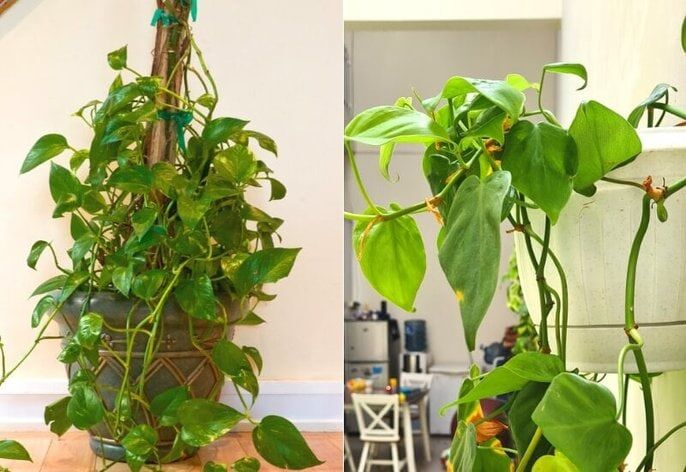
The petiole is the short stem that attaches the leaf to the plant’s main vines.
The petiole of a Pothos plant is thicker than philodendrons, with the same or only slightly lighter green color than the rest of the foliage. This leads to the deeply grooved ridge that runs parallel to the leaf stem.
On philodendron plants, the petiole is more round and smooth down the entire length and into the leaf. After the new growth, it will often see a more brownish color than the leaves as well.
Pothos and Philodendron Variations
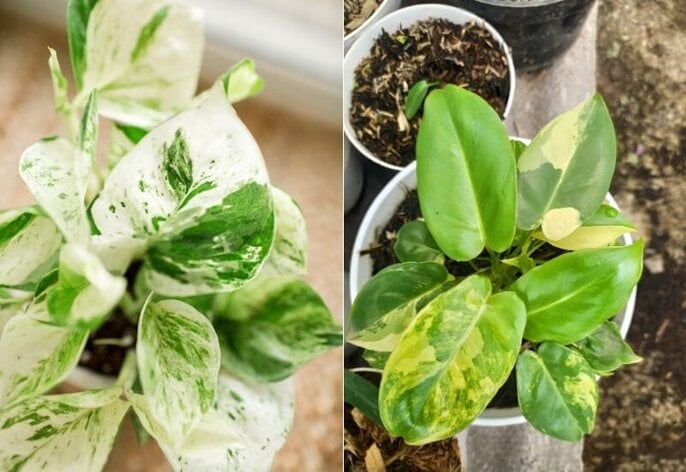
It can be easy to get confused by the many different varieties of these two plants. While both species have several variations of variegated varieties, Pothos variations are more abundant.
Pothos variations
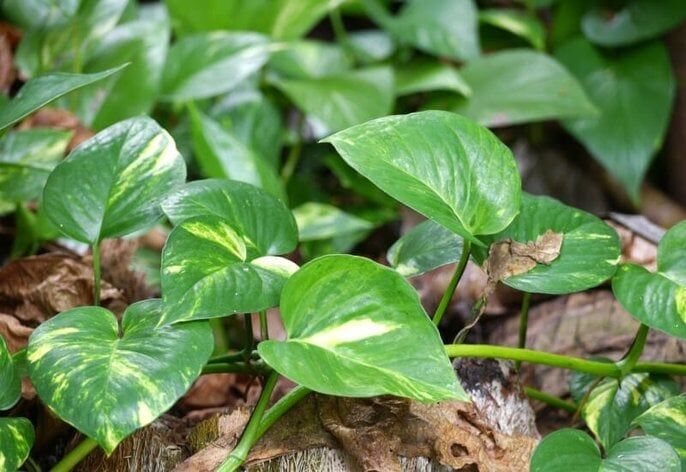
Pothos plants come in many different colors and variations, while leaf shape and growth style will remain very similar. The most common Pothos varieties are the beautiful golden Golden Pothos and mostly green Jade Pothos.
These varieties can also have cream patches if they are placed in areas with plenty of sunlight. However, the unique Marble Queen Pothos has an eye-catching “crushed” variety that would be hard to confuse.
Philodendron variations
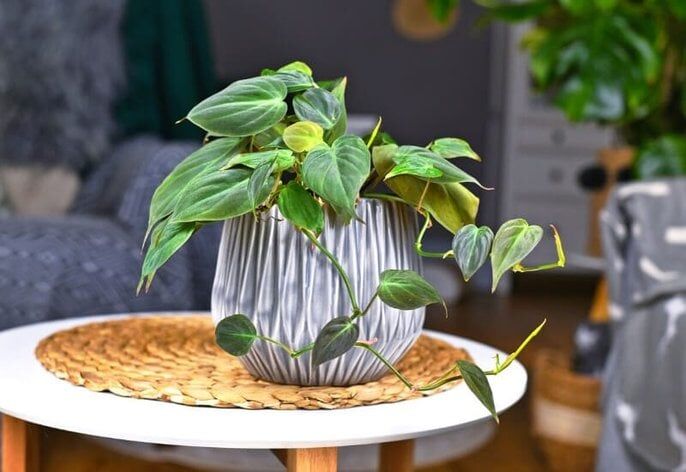
Philodendrons also have many varieties of varieties, but there is less variation among them.
Instead, these varieties can vary wildly in leaf shape and growing style. For example, it’s almost hard to believe that Pink Princess Philodendron and Hope Plant are related at first glance.
While the Spader Ace Philodendron is similar to the Heartleaf Philodendron in leaf shape and plant habits, it has a much darker purple leaf color.
Because Philodendron is better suited to low light conditions, most of these varieties will still retain their color better than Pothos plants in shady conditions.
Conclusion
Although Pothos and Heartleaf Philodendrons share some common features in their appearance at first glance, it will be much easier to distinguish them with a little further inspection.
Since these plants really thrive better under slightly different growing conditions and labels from retailers can sometimes be misleading, it is important to have the knowledge to identify them on your own.
While some of the key features of identification may seem a bit technical, I hope this article has helped explain them in a way that even a beginner can identify.
 pyomn
pyomn



